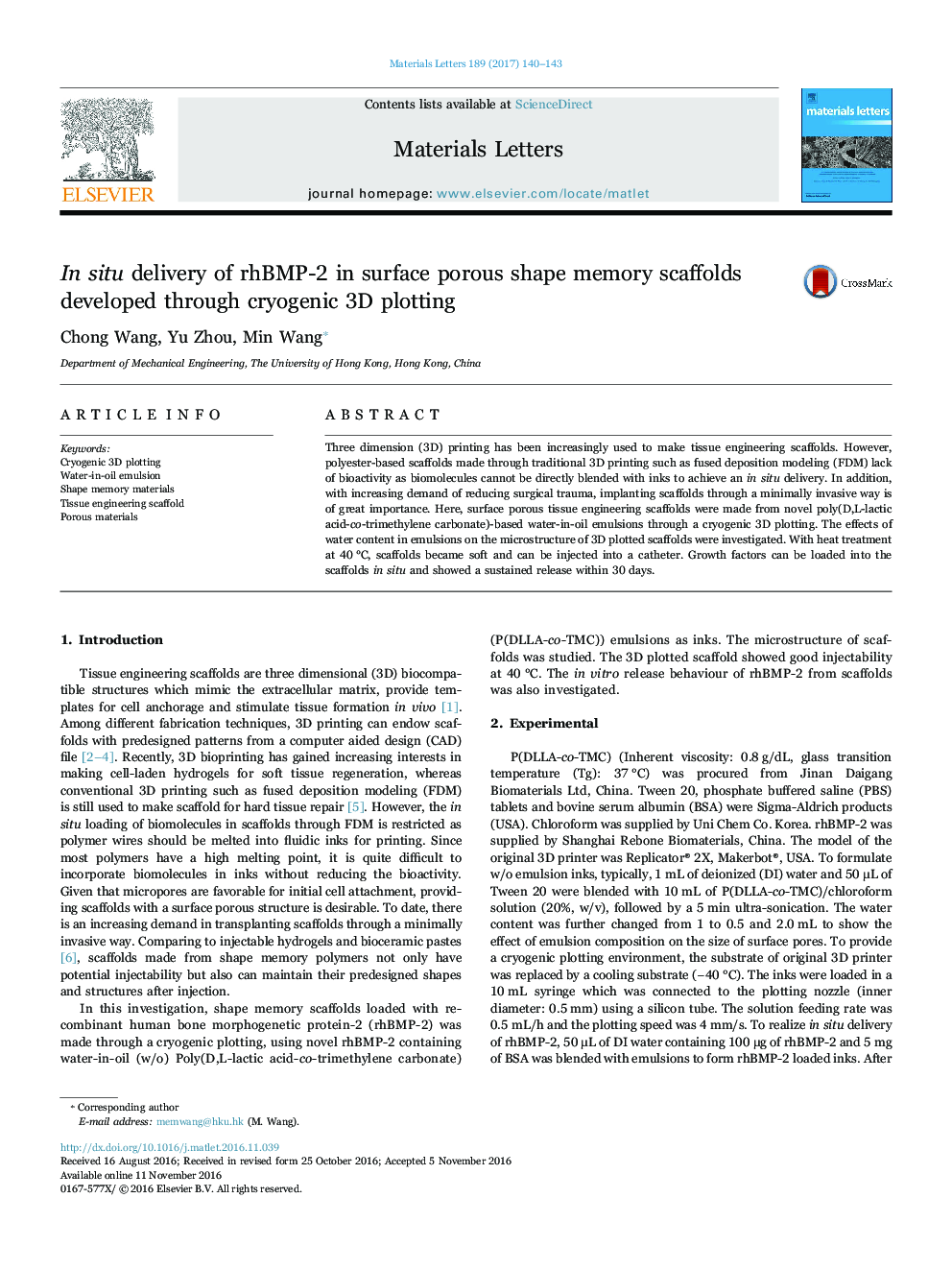| Article ID | Journal | Published Year | Pages | File Type |
|---|---|---|---|---|
| 5463616 | Materials Letters | 2017 | 4 Pages |
Abstract
Three dimension (3D) printing has been increasingly used to make tissue engineering scaffolds. However, polyester-based scaffolds made through traditional 3D printing such as fused deposition modeling (FDM) lack of bioactivity as biomolecules cannot be directly blended with inks to achieve an in situ delivery. In addition, with increasing demand of reducing surgical trauma, implanting scaffolds through a minimally invasive way is of great importance. Here, surface porous tissue engineering scaffolds were made from novel poly(D,L-lactic acid-co-trimethylene carbonate)-based water-in-oil emulsions through a cryogenic 3D plotting. The effects of water content in emulsions on the microstructure of 3D plotted scaffolds were investigated. With heat treatment at 40 °C, scaffolds became soft and can be injected into a catheter. Growth factors can be loaded into the scaffolds in situ and showed a sustained release within 30 days.
Related Topics
Physical Sciences and Engineering
Materials Science
Nanotechnology
Authors
Chong Wang, Yu Zhou, Min Wang,
